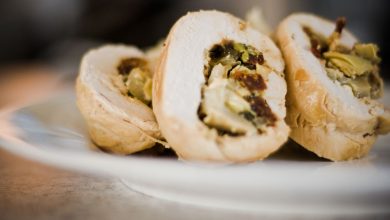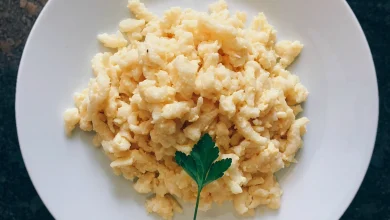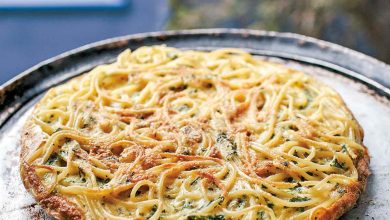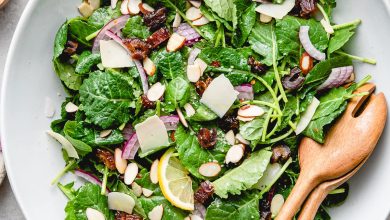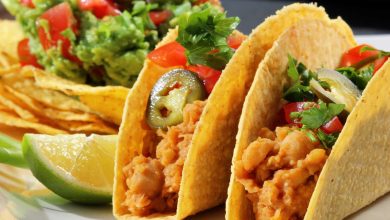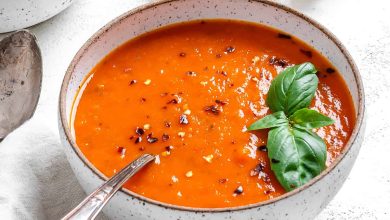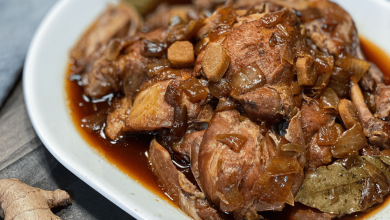🥟 Authentic Japanese Gyoza: A Delicious Culinary Delight 🥢
Gyoza, also known as potstickers, are savory Japanese dumplings that have gained international popularity due to their delightful taste and versatility. These little parcels of goodness are enjoyed by people all around the world. Let’s explore the fascinating world of gyoza, complete with emojis for an extra dash of fun! 😄
📜 History:
Gyoza has an interesting history that can be traced back to ancient China, where dumplings were first created. They made their way to Japan and became known as “gyoza” during the early 20th century. Gyoza gained immense popularity in Japan and are now a staple of Japanese cuisine, often enjoyed in restaurants and as a home-cooked meal.
🥟 Components:
Gyoza consists of a few key components:
-
Wrapper: The outer layer of the dumpling, made from a thin dough, typically a mixture of flour and water. The dough is rolled out and used to encase the filling.
-
Filling: The heart of the gyoza, the filling can vary but often includes a combination of ground pork, minced vegetables (cabbage, garlic chives, and garlic), and seasonings (soy sauce, sesame oil, and ginger).
-
Dipping Sauce: Gyoza are often served with a delicious dipping sauce made from soy sauce, rice vinegar, and sometimes a touch of chili oil for extra flavor.
🍳 Steps to Prepare Authentic Japanese Gyoza:
Now, let’s dive into the process of making gyoza at home. Be prepared for a mouthwatering experience! 😋
Ingredients:
- Gyoza wrappers (readily available or homemade)
- Ground pork
- Cabbage
- Garlic chives
- Garlic
- Soy sauce
- Sesame oil
- Ginger
- Salt and pepper
- Water
- Cornstarch (for sealing the dumplings)
- Vegetable oil (for pan-frying)
Steps:
-
Prepare the Filling:
- Finely chop the cabbage, garlic chives, and garlic.
- In a mixing bowl, combine the ground pork, chopped vegetables, soy sauce, sesame oil, grated ginger, salt, and pepper. Mix thoroughly.
-
Wrap the Gyoza:
- Place a small amount of the filling in the center of a gyoza wrapper.
- Moisten the edge of the wrapper with water, fold it in half, and crimp the edges to seal the dumpling. You can use various folding techniques for a decorative touch.
-
Pan-Fry the Gyoza:
- Heat vegetable oil in a pan over medium-high heat.
- Arrange the gyoza in the pan, flat side down.
- Allow them to cook until the bottoms become golden brown.
- Add water to the pan and cover it to steam the gyoza until the wrappers become translucent and the filling is cooked.
-
Serve with Dipping Sauce:
- Mix soy sauce, rice vinegar, and a dash of chili oil to prepare the dipping sauce.
- Serve the gyoza hot with the dipping sauce.
⏲️ Preparation Time:
The time needed to prepare gyoza depends on your experience and the quantity you’re making. Generally, it takes about 30-45 minutes to prepare the filling and wrap the gyoza. Cooking time can vary, but it usually takes 10-15 minutes to pan-fry and steam the dumplings.
So, there you have it! Authentic Japanese gyoza, a delightful dish with a rich history and a taste that’s sure to satisfy your cravings. Enjoy making and savoring these delicious dumplings! 🥢😊
🥟 Nutrition Facts and Health Information for Japanese Gyoza 🥢
While gyoza can be incredibly delicious, it’s important to be mindful of their nutritional content. Here’s a brief overview of the nutrition facts and some health considerations for this delightful dish:
Nutrition Facts (per 100g of Pork Gyoza, approximately 4 pieces):
- Calories: 250-300 kcal
- Protein: 10-15g
- Fat: 12-18g
- Saturated Fat: 4-6g
- Carbohydrates: 25-30g
- Dietary Fiber: 1-2g
- Sodium: 400-700mg
These values can vary depending on factors like the size of the gyoza, the type of wrapper, and the specific ingredients used in the filling. Pork is a common meat used, but you can also make gyoza with other lean meats or even tofu for a healthier option.
🍽️ Health Considerations:
-
Moderation: Gyoza can be high in calories and fat due to the pan-frying method. Consuming them in moderation is key to a balanced diet.
-
Nutrient Profile: Gyoza do provide protein, carbohydrates, and some fiber (from the vegetables in the filling). However, they are relatively high in sodium and fat, especially if you use a lot of oil for pan-frying.
-
Serving Size: Be mindful of your serving size. It’s easy to overindulge in these tasty dumplings.
-
Healthier Variations: If you’re concerned about the nutritional content, you can make gyoza healthier by using leaner meats, less oil for cooking, and whole wheat or low-sodium wrappers.
-
Dipping Sauce: The dipping sauce can add extra sodium, so use it sparingly if you’re watching your salt intake.
Remember that gyoza, like many dishes, can be a part of a balanced diet when enjoyed in moderation. Additionally, homemade gyoza allows you to have more control over the ingredients and cooking methods, making it easier to adjust the nutritional profile to better suit your dietary needs and preferences. 🥢🍽️😊

